Llangattock is a village situated in the historic county of Breconshire, in the Brecon Beacons National Park. The village lies in the Usk Valley just across the river from the town of Crickhowell. The Monmouthshire and Brecon Canal passes through the village en route between Brecon and Pontypool. The men, and one woman, of the village who fell during both World Wars are commemorated in war memorials situated inside St. Cattwg’s Church. The names are mirrored on the relatively modern Crickhowell and District War Memorial in nearby Crickhowell.
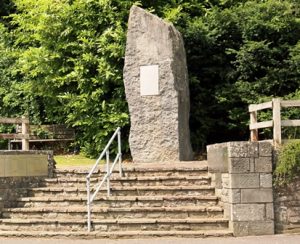
The Great War, 1914-1918
The Honourable Bernard Michael Bailey, Midshipman, Royal Navy. Bernard was born in London on 17 January 1899, the youngest son of Joseph Henry Russell Bailey, Lord Glanusk, and his wife, Edith Elma Bailey (nee Sergison), of Glanusk Park, Breconshire. He was an enthusiastic member of the Boy Scouts as a young man. Bernard joined the Royal Navy in January 1912 and was sent to the Royal Naval College at Dartmouth for training, qualifying as a Midshipman in August 1914. At the outbreak of war, he was posted aboard the Diadem-class armoured cruiser, HMS Argonaut. The cruiser was part of the 9th Cruiser Squadron, operating in the Atlantic and was stationed off Cape Finisterre from August 1914 to July 1915, when she was converted into a Hospital Ship. Bernard was then transferred aboard the Minotaur-class armoured cruiser HMS Defence. Defence had been built at Pembroke Dockyard, and launched on 24 April 1907, and was attached to the 1st Cruiser Squadron of the Grand Fleet as its flagship, under the command of Rear-Admiral Sir Robert Arbuthnot. Following reports that the German High Seas Fleet had put to sea in May 1916, the Grand Fleet steamed into the North Sea to locate the Germans. The First Cruiser Squadron formed the starboard flank of the cruiser screen, ahead of the main body of the Grand Fleet, with Defence to the right of the centre of the line. At 17:47 on 31 May 1916 Defence and HMS Warrior, the leading two ships of the squadron, spotted some German ships and opened fire. Shortly afterwards, they spotted the disabled German light cruiser SMS Wiesbaden and closed to engage, however both ships were spotted by the German battlecruiser SMS Derfflinger and four other battleships, which opened fire upon Defence and Warrior. Defence was hit in the magazine which exploded and sent her to the bottom of the North Sea, with all her crew of some 900 men. Bernard was 17 years old when he was killed in the sinking of Defence and is commemorated on the Plymouth Naval Memorial, Devon. His brother, Gerald Sergison Bailey, had been killed in France the previous year, whilst their uncle, John Lancelot Bailey, died whilst serving in India with the Brecknocks in 1918. Their eldest brother, Wilfred Russell Bailey, was awarded the Distinguished Service Order during the war. The boy’s father, Lord Glanusk, had served during the Boer War of 1899-1902, and was appointed Commanding officer of the 3rd SWB during the Great War, whilst another uncle, William Bailey, took over command of the Welsh Horse Yeomanry from Lord Kensington.
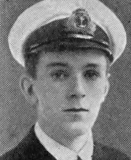
The Honourable Gerald Sergison Bailey, Second Lieutenant, Grenadier Guards. Gerald was born in London on 22 November 1893, the second son of Joseph Henry Russell Bailey, Lord Glanusk, and his wife, Edith Elma Bailey (nee Sergison), of Glanusk Park, Breconshire. He was an enthusiastic member of the Boy Scouts as a young man. Gerald was educated at Eton College and the Agricultural College at Cirencester, before beginning work for R. H. March, chartered accountant at the Cardiff Docks. He then proceeded to British East Africa to work at his father’s estate there. Following the outbreak of the war he returned to England and was commissioned as Second Lieutenant into his father’s old regiment, the Grenadier Guards. Upon embarking for France on 20 April 1915, Gerald was posted to the 2nd Battalion, Grenadier Guards, which his elder brother Wilfred was already serving as adjutant with. The battalion was attached to the 4th (Guards) Brigade, 2nd Division and was in billets at Bethune where Gerald arrived. The battalion moved back into the front line at Givenchy on 23 April, giving Gerald his first taste of trench life and continued a prolonged spell in the line over the coming weeks. By the time the Battle of Festubert opened on 15 May 1915 the 2nd Grenadier Guards had been relieved and were in reserve in billets at Le Casan and on the following day moved forward, to join the fray. The Battle of Festubert raged until 25 May, when it was called off due to heavy casualties and lack of progress. Another routine period of trench warfare then ensued over the coming months. On 4 August 1915 the 2nd Grenadier Guards relieved the Irish Guards to begin another tour in the Givenchy trenches. The Prince of Wales visited the battalion in the trenches on the following day. Gerald was killed in action by a German hand grenade, or bomb, whilst in the trenches here on 10 August 1915. The 22-year-old was buried in Guards Cemetery, Windy Corner, Cuinchy, France. His brother, Bernard Michael Bailey, was killed at the Battle of Jutland the following year, whilst their uncle, John Lancelot Bailey, died whilst serving in India with the Brecknocks in 1918. Their eldest brother, Wilfred Russell Bailey, was awarded the Distinguished Service Order during the war. The boy’s father, Lord Glanusk, had served during the Boer War of 1899-1902, and was appointed Commanding officer of the 3rd SWB during the Great War, whilst another uncle, William Bailey, took over command of the Welsh Horse Yeomanry from Lord Kensington.
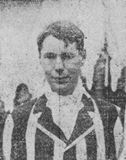
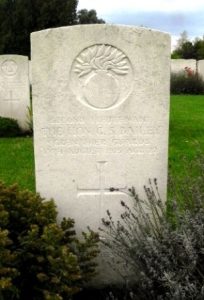
The Honourable John Lancelot Bailey, Captain, South Wales Borderers. John was born at Glanusk on 2 December 1878, the son of Joseph Russell Bailey, Lord Glanusk, and his wife, Mary Anne Jane Bailey (nee Lucas), of Hay Castle, Hereford and of Glanusk Park. He was educated at Eton and Cambridge and in 1903 married Vivien Dora Carey, of Guernsey. He lived with his wife in Guernsey, where their two daughters and a son were born over the coming years. John was commissioned as Second Lieutenant into the Brecknockshire Battalion, South Wales Borderers soon after the outbreak of war. The battalion was attached to the Welsh Division and moved to Pembroke Dock upon mobilisation. It was then withdrawn from the Division and on 29 October 1914 sailed from Southampton for Bombay, where the battalion transhipped and sailed for Aden, arriving on 16 December 1914. The battalion endured a torrid time in the heat of Aden, infamously losing several men to heatstroke. In August 1915 the battalion moved to India on garrison duties and remained there for the duration of the war. John took ill just weeks before the Armistice and died of influenza in hospital at Mhow on 26 October 1918. The 39-year-old was buried in Mhow Military Cemetery, and is commemorated on the Kirkee 1914-1918 Memorial, India. John is not commemorated on the original Llangattock war memorial but is commemorated on the recently erected Crickhowell and District War Memorial. His nephews, Bernard and Gerald Bailey, the two sons of his eldest brother, Lord Glanusk, who were killed during the war.
John Thomas Boddy, Private, 286603, Royal Air Force. John was born at Wooburn, Buckinghamshire on 1 June 1875, the son of William Boddy and Sarah Boddy (nee Wetton). His father was a paper manufacturer and by 1881 had moved the family to Llangenny. Upon leaving school, John began working as a woollen weaver, but later began work as a gardener, and gained a position as gardener at Penmyarth, on the Glanusk Estate. John married Ada Rosina Stephens at Llangattock on 4 May 1897 and the couple set up home at Fwddog, where their four children were born over the coming years. John had become the Secretary of the Mission Church at Llangattock just after the outbreak of war. He was already 43 years old when he enlisted into the Royal Air Force on 21 August 1918 and was posted to Blandford for training. Less than two months after enlisting, John took ill and was hospitalised at Blandford Clearing Hospital. He died there of broncho-pneumonia on 24 October 1918. The remains of the 43-year-old were conveyed back to Llangattock by rail, and he was buried in St. Cattwg’s Churchyard on 2 November.
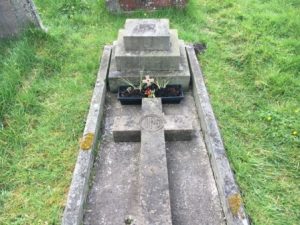
George Davies, Lance Corporal, 139044, Royal Engineers. George was born in Craswall, Herefordshire in about 1879, the son of David and Sarah Davies. The family had moved to Wales by 1891 and were residing in 259, 20th Row, Tredegar. George found work as a collier as soon as he left school and he married Mary Ann in 1897. The couple had four children over the coming years before moving to Pantyrhiw, Llangattock, where their fifth child was born. George enlisted at Brynmawr into the South Wales Borderers soon after the outbreak of war and was drafted to France on 12 December 1914, joining the 1st Battalion, South Wales Borderers. The battalion was attached to 3 Brigade, 1st Division and was in positions north-east of Bethune, near Richebourg when George arrived. The 1st Division took part in its first major action of 1915 here on 9 May 1915, during the Battle of Aubers Ridge, when it attacked alongside the Meerut Division. The attack of the 2nd Welsh was held up by a flooded ditch, which the men forded, before being hit by heavy machine-gun fire, and a large number of casualties were suffered before the survivors withdrew. George was later transferred to the 180th Tunnelling Company, Royal Engineers following its formation at Labuissiere in August 1915, and the company moved into the Vermelles sector to begin work on mining but were soon redirected to digging and improving trenches. George was wounded whilst working near Givenchy on 13 January and was evacuated to the 33rd Casualty Clearing Station at Bethune, where he died of his wounds the following day, 14 January 1916. The 37-year-old is buried in Bethune Town Cemetery, France.
David John Harris, Private, 3596, Australian Infantry. David was the son of Samuel Harris and Ann Harris (nee Bevan), of Neaudd-Fach, Llangynidr. He emigrated to Australia in 1907 and found work at a sugar plantation in South Mossman, Queensland. David enlisted into the 9/1st Pioneer Battalion, Australian Imperial Force at Sydney on 27 November 1916. On 24 January 1917 he embarked at Sydney for England aboard HMAT Anchises and disembarked at Devonport on 27 March, before joining the Australian Depot at Durrington, on Salisbury Plain. David had two spells of leave over the coming months, returning home both times to see his family, but on the second occasion overstayed his leave by three days. On 11 July he transferred to the 2nd Battalion, Australian Infantry and embarked for France on 18 October, joining the battalion at Ypres, where it was attached to the 1st Brigade, 1st Australian Division. The battalion had suffered heavy losses during the Battles of Polygon Wood and Broodeseinde by the time that David arrived. He then took part in a number of minor action that the Division was involved in during the latter stages of the Passchendaele offensive, before the Australians settled down for the winter in Flanders, in the Messines sector. On 22 February 1918 David was invalided sick, but on 6 March re-joined his battalion. The 1st Division was still at Messines when the Germans launched their final offensive on the Somme on 21 March 1918. The 1st Division had begun moving to the Somme when the Germans launched the second phase of their offensive, on the Lys, on 9 April 1918 and was rushed back, before helping safeguard the vital rail point of Hazebrouck. The division remained in Flanders until July, carrying out a number of successful trench raids, before re-joining the Australian Corps on the Somme on 8 August 1918. On that day a combined assault by the Australians, Canadians and British, at Villers Bretonneux had broken the German lines and on 21 August a general assault was launched by the Allies on the Somme front. Two days later the 1st Division attacked south of the River Somme towards Chuignes, capturing some 2,000 German prisoners but suffering heavy losses. David was killed in action near Jeancourt on 10 September 1918. The 33-year-old has no known grave and is commemorated on the Villers-Bretonneux Memorial, France. His brother, Henry, died in India a month later.
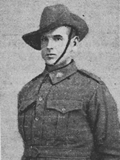
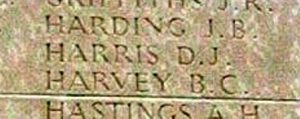
Henry Harris, Private, 200515, South Wales Borderers. Henry was the son of Samuel Harris and Ann Harris (nee Bevan), of Neaudd-Fach, Llangynidr. He trained as a joiner prior to the war. Henry enlisted into the Brecknockshire Battalion, South Wales Borderers at Brecon soon after the outbreak of war. The battalion had mobilised at Brecon attached to South Wales Brigade, Welsh Division, moving to Pembroke Dock and then Dale. On 29 October 1914 the battalion sailed from Southampton for Bombay, before transferring to Aden, where the battalion took part in a tragic crossing of the desert which saw a number of men die of heatstroke. In August 1915 the battalion embarked for India, arriving at Bombay, before spending the rest of the war on garrison duties in the country. Henry worked as a carpenter during his time in India, probably carrying out work in the barracks at Mhow. He became ill towards the end of the war and was hospitalised at Mhow on 21 October 1918. Henry died of enteric fever four days later, on 24 October 1918. The 24-year-old was buried with full military honours in Mhow Military Cemetery. He is also commemorated on the Kirkee 1914-1918 Memorial, India. His brother, David, was killed in France the previous month.
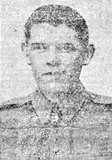
Frank Rowland Herrington, Private, 15554, Monmouthshire Regiment. Frank was the son of William and Patience Herrington, of Reading, Berkshire. He came to Crickhowell prior to the war to work as a porter at the Union Workhouse. Frank had served for three years with the Royal Berkshire Regiment as a young man and in November 1914 enlisted at Crickhowell into the 2/1st Brecknockshire Battalion, South Wales Borderers, which was stationed in Brecon. In the spring of 1915, Frank married Ethel Laura Watkins, of Usk Cottage, Crickhowell. The battalion then moved to Dale in April 1915, joining the Milford Haven defences, then at the end of the year moved to Bedford, joining the 68th (2nd Welsh) Division. He was drafted to the Infantry Base Depot in France on 30 July 1916 and from there was posted to the 1/2nd Battalion, Monmouthshire Regiment, which was the Pioneer Battalion to the 29th Division, and was at Brandhoek, in the Ypres Salient, rebuilding following heavy losses on the Somme. At the beginning of October, the Division withdrew from Ypres and moved back to the Somme to take part in the latter stages of the Somme offensive. The 2nd Monmouth’s set up camp at Montauban and began work immediately after arriving, repairing the road to Trônes Wood. The battalion remained here over the coming weeks, then after Christmas moved to Fourdrinoy to begin a training scheme. On 12 January 1917 the battalion left the camp and moved to Maricourt, before marching to Montauban and began work on a duckboard track. The battalion then began work in preparation for an assault by the 29th Division upon Prussian Trench and advanced into the line by 27 January, ready to consolidate any gained ground. Frank was killed in action here on 28 January 1917, possibly whilst attached to the 2nd Battalion, South Wales Borderers. The 30-year-old has no known grave and is commemorated on the Thiepval Memorial, France.
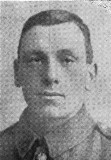
Gwilym Christopher Bowring James, Lieutenant, South Wales Borderers. Gwilym was born in Merthyr Tydfil on 28 August 1882, the son of Gwilym Cristor James and Elizabeth Margaret James (nee Rees). His father ran his own successful legal practise at Merthyr for many years and was a Member of Parliament and High Sheriff of Monmouthshire, before retiring to his country house at Llanwysg, Llangattock in 1912. Gwilym was educated at Eton and Oxford and upon graduating in 1909 became a partner in his father’s business. Gwilym enlisted into the Inns of Court Officer Training Corps in September 1916 and in May 1917 was commissioned as Second Lieutenant into the South Wales Borderers, embarking for France to join the 2nd Battalion, South Wales Borderers soon afterwards. The battalion was at Arras attached to 87 Brigade, 29th Division. In the Spring of 1917 the Division fought at the Battle of the Scarpe, which was part of the Arras Offensive, seeing heavy fighting around Monchy-le-Preux, and then moved further north to Ypres, initially to hold the line whilst other units had been withdrawn for specialist training, in readiness for the Third Battle of Ypres, which opened on 31 July 1917. The 29th Division went into reserve whilst the first attacks, the Battle of Pilckem Ridge, took place, then on the night of 14-15 August the 2nd SWB moved into the line facing Langemarck, ready to launch another offensive. On the following day the battalion reconnoitred the ground in front of them, and laid white tapes in No Man’s Land, to guide the attacking troops, and at dawn on 16 August 1917 the 2nd SWB launched an attack on Langemarck. The battalion successfully took its two objectives but had suffered 163 casualties. The Division then had another period out of the line to rest and refit before taking part in further fighting near Poelcapelle. Early in November 1917 the Division was relieved from the line at Ypres, and moved south to the Bellacourt area, to prepare to take part in the forthcoming Battle of Cambrai. The Division entrained for Péronne on 17 November, marching to a camp four miles out of the town at Haut Allaines, then by midnight on 18 November had reached Fins. On the following day the Division received its battle stores and detailed orders for the forthcoming battle, marching off via Gouzeaucourt to its assembly positions at Marcoing. The assault began at dawn on 20 November, but the Division suffered terrible casualties whilst attacking Masnières, on the Hindenburg Line. Gwilym had been badly wounded during the fighting on the following day and was evacuated to a nearby Casualty Clearing Station, where he died of his wounds two days later, on 23 November 1917.The 35-year-old was buried in Rocquigny-Equancourt Road British Cemetery, Manancourt, France. His cousin, Lieut C H G Martin, of Dowlais, was killed at Hill 60 earlier in the war.
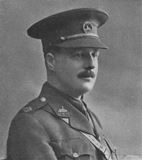
John James, Private, 14518, South Wales Borderers. John was born in Cwmdu in 1872, the son of William James and Jane James (nee Isaac). He left home to enlist into the Devonshire Regiment in 1895, serving in the Afghanistan, Egyptian, and South African campaigns over the coming years. Upon leaving the army he found work as a coalminer in Treorchy, then just prior to the war he had moved to 34, Central Street, Ystrad Mynach, where he again found work as a coalminer. John re-enlisted into the army at Newport on 7 September 1914 and was posted to the 6th Battalion, South Wales Borderers. The battalion formed at Brecon in September 1914, moving to Codford to join 76 Brigade, 25th Division, before spending the winter in billets in Bournemouth. In February 1915 the battalion became the Pioneer Battalion to the 25th Division, before moving to Hursley Park and then to Tournay Barracks, Aldershot to complete its training. The battalion embarked for France and landed at Le Havre on 25 September 1915 before moving to the Vimy area with the Division, where they defended Vimy Ridge against a German attack in May 1916. They then moved to the Warloy area and attacked on 3 July near Thiepval. The division fought throughout the Battle of the Somme over the coming weeks, and the men of the 6th SWB were kept busy in the Aveluy sector. John was wounded whilst at work in the Leipzig Salient on 28 July, suffering shrapnel wounds to the chest and was evacuated via one of the divisions Field Ambulances to a hospital at the coast. He was invalided home to Britain on 6 August 1916 for further treatment, before being posted to the 3rd Battalion, South Wales Borderers, which was at Litherland Camp, near Liverpool. John was discharged from the army as medically unfit on 7 August 1917 and initially went to live at 6, Thorpe Street, County Durham. His health continued to wane, so John returned to Wales and went to live with his sister Janet Rooke, and her family at Wharfe Cottage, Llangattock. John eventually died there on 26 November 1918 as a result of ill health brought about by his earlier wounds. The 45-year-old was buried in St. Cattwg’s Churchyard, Llangattock. John is not commemorated as a war casualty by the CWGC.
Ernest Jones, Lance Corporal, 35565, South Wales Borderers. Ernest was born in 1892, the son of Thomas Jones and Eliza Jones (nee Jones), of Penyrollodd, Glasbury. The family moved to Llangattock in 1915. Ernest enlisted into the 12th Battalion, South Wales Borderers at Abergavenny during the summer of 1915. The battalion was raised at Newport by the Welsh National Executive Committee in March 1915 as a bantam Battalion, then in July 1915 moved to Prees Heath to join the Welsh Bantam Brigade. During September 1915 the Brigade moved to Aldershot and became 119 Brigade, in the 40th (Bantam) Division. In December 1915 the Division moved to Blackdown to complete its training before embarking for France and landing at Le Havre on 2 June 1916. The Division moved to positions around Lillers before taking over the North Maroc Sector, near Loos, for trench initiation and once acclimatised was left to hold the sector itself over the coming months. The infantry battalions of the Division then began the usual routines of rotating for duty in the trenches: normally four days in the front line; four in support and four in reserve. Late in 1916 the Division moved south to the Somme, and fought at the Battle of the Ancre, before remaining in the sector over the winter. In March 1917 the Germans withdrew to their shortened line, called the Hindenburg Line, and the 40th Division was among the units which followed the withdrawal. Later in the year the Division took part in the Battle of Cambrai and launched an attack on Bourlon Wood on 23 November 1917. The attack was carried out by 119 Brigade, led by the 12th SWB and 19th RWF. The 17th Welsh was in support for the initial assault, but was soon ordered to advance, to support the two attacking battalions. Heavy fighting raged within the wood over the coming days, with the 18th Welsh also being thrown forwards into the fight, and the Division suffered terribly. Ernest was killed in action in Bourlon Wood on 25 November 1917. The 25-year-old has no known grave and is commemorated on the Cambrai Memorial, Louverval, France.
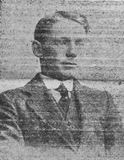
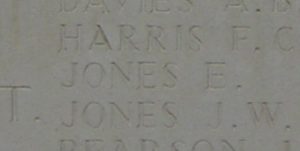
Armar Valentine Lowry-Corry, MC, Lieutenant, Grenadier Guards. Armar was born at Eaton Square, London on 25 March 1896, the son of Colonel Noel Lowry-Corry and of Rosalind Gertrude Lowry-Corry (nee Lloyd-Anstruther). His father, a career officer who later gained the Distinguished Service Order and rose to the rank of Brigadier-General, owned Llangattock Court, in Breconshire. Armar was commissioned into his father’s regiment, the Grenadier Guards, on 14 August 1914. He embarked for France on 1 April 1915 to join the 2nd Battalion, Grenadier Guards. The battalion was at Givenchy when Armar arrived, attached to the 4th (Guards) Brigade, 2nd Division. He joined the battalion in time to take part in the Battle of Festubert, a futile attack from 15 to 25 May which resulted in heavy casualties for little gain. Armar gained the award of the Military Cross for his gallantry during the battle. The citation was published in the London Gazette of 24 July 1915 and read: “For conspicuous gallantry and ability in the attack at Rue du Bois. on 18th May 1915. When his Company Commander was killed and all the other Officers wounded, he reorganised and commanded the Company with great coolness. He has also done good work with patrols near Givenchy.” On 20 August 1915 the 2nd Grenadier Guards were transferred to the 1st Guards Brigade, of the newly formed Guards Division and from 25 September took part in the Battle of Loos and the Action of the Hohenzollern Redoubt. The Division had a brief rest in the Calais area, before moving to the Ypres Salient, and held the line at Potijze for several months. At the end of July 1916, the Division withdrew from Ypres and moved to the Somme, before holding the line north of the Ancre for a short period. By 25 August the Guards Division had moved slightly south, and had marched passed Corbie, to Mericourt-L’Abbe. By 9 September the Guards had passed Ginchy, and moved into positions at Guillemont, prior to taking part in the Battle of Flers-Courcelette, the first-time tanks were ever used in action. By now Armar had been attached to the 1st Battalion, Grenadier Guards in the same division. He was shot and killed whilst the battalion was in the line near Guillemont on 12 September 1916. The 20-year-old was buried in Citadel New Military Cemetery, Fricourt, France. Armar is not commemorated on the Llangattock war memorial, but at St Michael and All Saints Church, Alberbury, Shropshire.
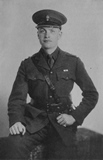
Archie Pritchard, Lance Corporal, 1607, Monmouthshire Regiment. Archie was born at Six Bells in 1895, the son of John Pritchard and Selina Pritchard (nee Hooper). His father was from Llangattock and prior to the war had moved his family back to Dardy, Llangattock. Archie enlisted at Abertillery into the 3rd Battalion, Monmouthshire Regiment soon after the outbreak of war. The battalion mobilised at Abergavenny attached to the Welsh Border Brigade, Welsh Division, before moving to Pembroke Dock. On 10 August 1914 the Division moved to Oswestry before moving to Northampton, then spent Christmas at Bury St. Edmunds before moving to Cambridge. In February 1915 the 3rd Monmouth’s left the Welsh Division and landed in France on 14 February, before moving to the Ypres Salient. On 3 March 1915 the battalion joined 83 Brigade, 28th Division. On 8 April the 3rd Monmouth’s relieved a French Division in the sector east of the Polygon Wood to begin its first tour in the trenches. The battalion was relieved four days later, and marched to billets in Ypres, then on 17 April relieved the 5th King’s Own in the front line, to begin a spell which would last for 17 days without relief. On 22 April, just to the north, the Germans launched the first gas attack of the war upon French Colonial troops at Gravenstafel, heralding the opening of the Second Battle of Ypres. The fighting remained to the north of Polygon Wood until 3 May, when the Germans widened their attacks and the Polygon Wood sector was evacuated by the 28th Division, which fell back on the G.H.Q. line at Potijze. Archie had been killed in action on the day prior this the withdrawal, on 2 May 1915. The 19-year-old has no known grave and is commemorated on the Ypres (Menin Gate) Memorial, Belgium.
William John Thomas, Private, 54605, Cheshire Regiment. William was born in 1892, the son of William Thomas and Rose Thomas, of Llaswern Fach Farm, Llangattock. He worked as a shepherd and a carter on his parent’s farm prior to the war. William enlisted at Brecon into the 13th Battalion, South Wales Borderers on 22 February 1916 and was initially placed on the Army Reserve. He was mobilised on 23 May 1916 and joined the battalion at Kinmel Park. On 24 August William was transferred to the 12th Battalion, Welsh Regiment, then to the Cheshire Regiment. He was drafted to France, embarking at Southampton on 15 December 1916 and disembarked at Le Havre before being posted to the 22nd Battalion, Cheshire Regiment. William was on his way to join the battalion when he took ill and was sent to the 15th Casualty Clearing Station at Blaringhem on 22 December. He was diagnosed as suffering from Cerebro spinal fever so was sent to No 7 General Hospital at Longuenesse, where he died on 10 January 1917. The 24-year-old is buried in Longuenesse (St. Omer) Souvenir Cemetery, France.
James Watkins, Private, 235996, Herefordshire Regiment. James was born in 1884, the son of William Watkins and Elizabeth Watkins (nee Preece), of Llangattock. He married Florence Eleanor Roberts at Hereford on 26 December 1912 and the couple set up home at 10, Walmer Street, Hereford. James worked as a domestic gardener prior to the war. He enlisted at Hereford into the 1/1st Battalion, Herefordshire Regiment soon after the outbreak of war. The battalion was a Territorial unit and mobilised at Hereford on 4 August 1914, attached to the Welsh Border Brigade, Welsh Division. The Division initially moved to its war station at Pembroke Dock, but soon moved via the Wellingborough area to Bury St. Edmunds, and then to Bedford, where the Division was numbered the 53rd (Welsh) Division. On 19 July 1915 the entire Division sailed from Devonport for Imbros and on 9 August 1915 landed at Suvla Bay. The infantry moved off the beaches into the bush, but due to a lack of maps and no knowledge of the terrain, many of the units became disorientated, and the situation became chaotic. The Division was eventually evacuated from Gallipoli in December 1915, moving to Egypt to join the EEF, and helped guard the Suez Canal before taking part in operations to drive the Turks out of the Sinai. The EEF then turned its attention onto driving the Turks out of Palestine, and on 26 March 1917 launched its first offensive against the coastal city of Gaza, which guarded the road to Jerusalem. Initial gains during the day were lost when the assaulting divisions lost touch with each other, and communication broke down when a thick fog cloaked the battlefield. A second attempt to force Gaza was launched on 17 April, which also failed, and the EEF suffered a change in leadership, with Sir Edmund Allenby assuming command, before being re-organised, and a third offensive was launched against a wider front from Beersheba to Gaza on 31 October 1917. This time the Turkish defences were breached, and the road to Jerusalem now lay open and the EEF began to advance north. On 6 November 1917, 158 Brigade launched an attack on the Khuweilfeh Heights. James was killed in action during the attack that day. The 33-year-old is buried in Beersheba War Cemetery, Israel.
Joseph Williams, MM, Lance Corporal, 53983, Royal Welsh Fusiliers. Joseph was born in 1890, the son of Edward Williams and Sarah Williams (nee Powell), of Ffwddog, Llangattock. He married Rebecca Davies in 1909, and the couple settled at Fwddog. Joseph worked as a Masons Labourer prior to the war. He enlisted at Brecon into the 2/1st Brecknockshire Battalion, South Wales Borderers soon after its formation at Brecon September 1914. The battalion left Brecon for Dale, in Pembrokeshire in April 1915 to join the Milford Haven garrison, then at the end of 1915 moved to Bedford to join the 68th (2nd Welsh) Division. Joseph was drafted to France in the summer of 1916, joining the 1st Battalion, Royal Welsh Fusiliers, which was attached to 22 Brigade, 7th Division. In the summer of 1916, the Division was on the Somme, and took part in the Battle of Albert, where it captured Mametz, one of the few successes of 1 July 1916. It then fought at the Battle of Bazentin, and the Attacks on High Wood, playing a successful part in the ‘dawn attack’, and was also the first unit into High Wood. The Division then took part in the Battle of Delville Wood, and the Battle of Guillemont, before spending the winter on the Ancre. Joseph became a stretcher bearer in the battalion and was awarded the Military Medal for bravery in the field for gallantly recuing two wounded men from No Man’s Land during an assault upon the village of Puisieux on 27 February 1917. Upon his return home on leave later that year he was officially awarded his medal, plus a gold hunter watch, presented by the people of Llangattock. In March 1917 the division followed up the German Retreat to the Hindenburg Line, and took part in Flanking Operations Round Bullecourt, where the 7th Division saw terrible fighting alongside the Australians. Later in the year the Division moved to Ypres and fought at the Battle of the Polygon Wood. The division then took part in the Battle of Broodeseinde, the Battle of Poelcapelle and the Second Battle of Passchendaele. The battered division had suffered terrible losses at Ypres and upon its relief at the end of October became one of the British Divisions selected to come to the support of the Italian army. The 7th remained in Italy until the Armistice, playing a particularly important role in the assault to cross the Piave River, and in the Battle of Vittorio Veneto. Joseph survived the war, but contracted influenza just after the Armistice and died at the 11th General Hospital, Italy on 22 November 1918. The 28-year-old was buried in Staglieno Cemetery, Genoa, Italy.
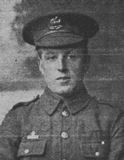
Samuel James Williams, Private, 203313, Royal Welsh Fusiliers. Samuel was born in 1897, the son of Thomas Williams and Margaret Williams (nee Wood), of Usk View, Leager Road, Llangattock. He enlisted into the 2/1st Brecknockshire Battalion, South Wales Borderers at Brecon on 11 November 1914. The battalion left Brecon for Dale, in Pembrokeshire in April 1915 to join the Milford Haven garrison, then at the end of 1915 moved to Bedford to join the 68th (2nd Welsh) Division. In November 1916 the battalion was absorbed by the 2/7th Battalion, Royal Welsh Fusiliers at Wrentham, near South Wold, and moved to Benacre Camp, Wrentham. Samuel embarked for France at Southampton on 11 January 1917 and disembarked at Le Havre the following day. Within two days he was admitted into hospital at Rouen suffering from scabies. It was not until 15 April that he was posted to the 4th Battalion, Royal Welsh Fusiliers, joining the battalion at the Pioneer Camp at Ypres, where it was serving as the Pioneer Battalion to the 47th (2nd London) Division. The division held a section of the front line running south from Hill 60 to the Ypres-Comines Canal and remained here until taking part in the Battle of Messines Ridge on 7 June 1917. The men of the 4th RWF worked tirelessly during the battle to repair roads and to extend the Spoil Bank tram line. In September 1917 the 47th Division was relieved and moved south, taking over positions some 2,000 yards north of Arras. The men of the 4th RWF again began work on road repairs, in preparation for the forthcoming Battle of Cambrai, which was launched on 20 November 1917. The battle raged until 6 December, by which time a German counterattack had been quashed and the 47th Division wintered in the area, stationed near Metz. By March 1918 the Division was situated near St. Quentin, and faced the German Spring Offensive here on 21 March 1918, seeing heavy fighting over the coming days as it was forced to withdraw across the old Somme battlefields towards Albert. Samuel was posted as missing during the withdrawal on 23 March 1918 and was later deemed to have been killed in action on that date. The 21-year-old has no known grave and is commemorated on the Arras Memorial, France.
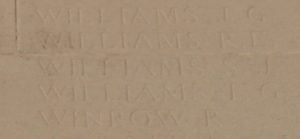
World War Two, 1939-1945
Robin Aelred Attwater, Sergeant, 1264198, Royal Air Force Volunteer Reserve. Robin was born at The Priory House, Caldey Island, Tenby in 1922, the son of Donald Attwater and Catherine Dorothy Attwater (nee Bickle). His father, who had served as a Lieutenant with the Royal Garrison Artillery in Palestine during the Great War, was a well renowned British Catholic author, editor and translator, and was a visiting lecturer at the University of Notre Dame. The family moved to Llangattock prior to the war. Robin enlisted into the Royal Air Force Volunteer Reserve and after training as a pilot was posted to the newly reformed 156 Squadron, Royal Air Force, which was based at RAF Alconbury, as part of No. 3 Group RAF and was equipped with Vickers Wellingtons. On 6 July 1942, Robin took off from Alconbury, flying in his crews first operational sortie, aboard a Vickers Wellington III, Serial Z1576. The aircraft was part of a group despatched to lay sea mines off Lorient, the famous German U-Boat base on the French Atlantic coast. Robin was just 20 years old when he was killed when his Wellington came down just off the French coast on the following morning, 7 July 1942, with the loss of all five of her crew. The bodies of all five men were recovered from the sea and were buried in Lorient (Kerentrech) Communal Cemetery, France.
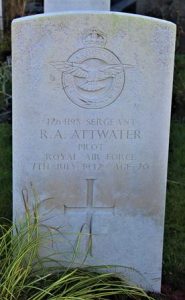
David Edmund Cole-Hamilton, DSC & Bar, MiD, Lieutenant, Royal Navy. David was born at Llangattock Rectory on 6 April 1914, the son of Reverend Canon Richard Mervyn Cole-Hamilton and Margaret Cole-Hamilton (nee Bennett). He joined the Royal Navy as a young man, and by 1935 was serving as an Acting Sub-Lieutenant. David married Anne Cole-Hamilton, daughter of George William Cole-Hamilton and Katherine Edith Cole Hamilton (nee Clinton-Baker), at Ware, Hertfordshire on 2 July 1938. Following the outbreak of war, he was posted aboard the Tribal-class destroyer HMS Sikh. The ship had been launched in 1937 and entered service as part of the 4th Destroyer Flotilla of the Royal Navy. In 1941, she took part in the hunt for and the sinking of the German battleship Bismarck. Sikh then transferred to the Mediterranean as part of Force H and on 13 December 1941, Sikh, together with HMS Legion, HMS Maori and the Dutch vessel HNLMS Isaac Sweers, sank the Italian cruisers Alberico da Barbiano and Alberto di Giussano in the Battle of Cape Bon. David was then detached from Sikh aboard the defensively armed Dutch Merchant ship Aagtekerk. The ship sailed from North Africa as part of Convoy MW 11, but on 14 June 1942 was attacked by a flight of Luftwaffe aircraft and sank in the Mediterranean Sea north of Tobruk. David was 28 years old when he was lost during the attack. He has no known grave, so is commemorated on the Chatham Naval Memorial, Kent. David was a highly decorated officer, having been awarded the Distinguished Service Cross in October 1941 for his work during the hunt for the Bismarck, and also gained a Bar to his award in May 1942 for his work during the sinking of the Italian ships. He was posthumously Mentioned in Despatches ‘For gallant and distinguished services as Liaison Officer in a Defensively Equipped Merchant Ship’ after the sinking of Aagtekerk. His sister Joan Margaret Cole-Hamilton was killed in an air crash over the Atlantic while on active service with the Government. The siblings are also commemorated on a war memorial inside St. Cattwg’s Church.
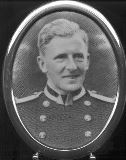
Joan Margaret Cole-Hamilton, MBE, Civilian. Joan was born at Llangattock Rectory on 15 October 1917, the daughter of Reverend Canon Richard Mervyn Cole-Hamilton and Margaret Cole-Hamilton (nee Bennett). Joan entered the Civil Service and became an intelligence agent, working under Frank Foley. She was awarded the MBE for her work during and after the evacuation of Norway in 1940, when she was evacuated from the country aboard a submarine after aiding in the evacuation of the British legation from Oslo. in April 1945 was sent among a party of delegates to attend the San Francisco Conference, a meeting of some fifty member states to agree the Charter for the newly formed United Nations. Joan was one of very a small number of women present at the conference. The Charter was signed at the San Francisco Conference on 26 June 1945. Joan then departed from San Francisco for Washington together with a party of delegates, where the party of eleven boarded an RAF Ferry Command Consolidated Liberator C.IX, Serial JT982 of 231 Squadron. The aircraft’s planned flight route was via Washington, Dorval, Gander, Keflavik, Prestwick, and Northolt. It departed from RCAF Gander, Newfoundland, on 4 July 1945 on the leg to Keflavik as planned, but whilst en-route suffered mechanical problems and disappeared. Despite an intensive search no trace of the aircraft, or its four crew members and eleven VIPs was ever found. Joan is commemorated in the Civilian Book of Remembrance at Westminster Abbey. She is not commemorated on the main Llangattock war memorial, but on a plaque together with her brother David Edmund Cole-Hamilton in St. Cattwg’s Church.
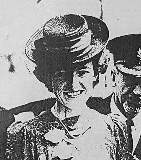
Leslie Richard Henry Mann, Colour Sergeant, PLY/X. 289, Royal Marines. Leslie was born at Hawkesbury, Gloucestershire on 22 September 1909, the son of James Henry Stephen Mann and Florence Minnie Mann (nee Rogers). He enlisted into the Royal Marines as a young man and continued to serve during the years prior to the war. Leslie had married Jenny Compton, the daughter of James Compton and Jane Ann Compton (nee Strong) at Llangattock, in the spring of 1939 and Jenny then moved with him to 5, Hobart Street, Plymouth. Leslie was awarded the Long Service Good Conduct Medal in August 1942. With his great experience, he was promoted to Acting Colour Sergeant and was posted to the Royal Marine Training Group at Burma Camp in Llwyngwril, Merionethshire as an instructor. He died there on 10 May 1945 of injuries sustained during a motorcycle crash. The remains of the 35-year-old were brought home to Llangattock, and he was buried with full military honours in St. Cattwg’s Churchyard four days later. His widow Jenny died in Haverfordwest in 1995.
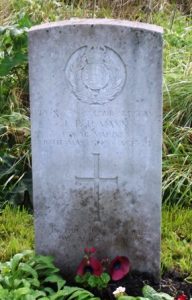
Wilfred Henry Stephens, Able Seaman, Merchant Navy. Wilfred was born on 15 January 1916, the son of Thomas Charles Stephens and Rosina Jane Stephens (nee Morris), of Ffawyddog, Llangattock. He worked as an agricultural labourer at Nedw Farm, Crickhowell prior to the war. Wilfred enlisted into the Merchant Navy and was posted aboard the Newcastle on Tyne registered cargo ship SS White Crest. White Crest departed from Cardiff on 14 January 1942 for Buenos Aries, stopping at Belfast on 12 February, with a cargo of coal and coke. She departed from Belfast on her Atlantic voyage as part of Convoy ONS-67 on 19 February 1942. On 24 February 1942 the ship was straggling behind the convoy, unescorted, when she was torpedoed by the German submarine U-162 and sank with the loss of all 47 of her crew. Wilfred was 26 years old when he was killed during the sinking, and is commemorated on the Tower Hill Memorial, London.
Albert Henry Wheeler, Private, 4078953, South Wales Borderers. Albert was born on 27 January 1916, the son of Richard George Henry Wheeler and Sarah Wheeler (nee Palliser), of Llangattock. He married Florence May Hancocks at Llangattock in the winter of 1941. Albert enlisted into the Monmouthshire Regiment but was posted to the 2nd Battalion, South Wales Borderers. The battalion was a regular army unit and was in Northern Ireland at the outbreak of war. In December 1939 the battalion left Northern Ireland and joined the 148th Infantry Brigade, 49th (West Riding) Infantry Division, then in April 1940 transferred to the 24th Guards Brigade (Rupertforce), before landing in Norway to take part in the Norwegian Campaign. The battalion was among the first British troops to see action against the Germans during the war. The Norway campaign ultimately failed, and the brigade was evacuated back to Britain. The 2nd SWB then transferred to the 37th Independent Infantry Brigade, which was redesignated as the 7th Infantry Brigade the following day and remained with the brigade until 1 March 1944 when it transferred to the newly created 56th Independent Infantry Brigade, together with the 2nd Essex and the 2nd Gloucester’s, before beginning training for the invasion of Normandy. The battalion became the only Welsh battalion to take part in the Normandy landings on 6 June 1944, landing at Gold Beach under command of the 50th (Northumbrian) Infantry Division. The division then took part in the fighting for Normandy and following the breakout, took part in the advance through Northern France into Belgium and Holland over the coming months. Following the closure of Operation Market Garden, the division spent an arduous and miserable winter on the ‘island’- a waterlogged section of land between Arnhem and Nijmegen. Albert was killed here on 23 November 1944. The 28-year-old is buried in Venray War Cemetery, Netherlands.
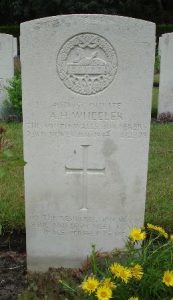
David Ronald Williams, Able Seaman, D/SSX 24476, Royal Navy. David was born on 23 January 1921, the son of David John Williams and Mary Ann Williams (nee Jones), of Llangattock. He enlisted into the Royal Navy as a young man and by the time war broke out was serving aboard the aircraft carrier HMS Glorious. She had originally been built as a Courageous-class battlecruiser during the First World War but during the late 1920’s was converted for use as an aircraft carrier. She re-commissioned in 1930 and spent most of the coming years operating in the Mediterranean. After the start of the Second World War in 1939, Glorious spent the rest of the year unsuccessfully hunting for the commerce-raiding German cruiser Admiral Graf Spee in the Indian Ocean before returning to the Mediterranean. She was recalled home in April 1940 to support operations in Norway following the German invasion. On 7 June 1940 Glorious left Norway after taking onboard a number of aircraft from RAF units operating there and set sail for the safety of Scapa Flow. On the following day, 8 June 1940, Glorious and her two escorting destroyers, Acasta and Ardent, was spotted by the German battleships Scharnhorst and Gneisenau, which opened fire upon the helpless ships, sinking all three with the loss of over 1,500 lives. David was 19 years old when he was killed in the sinking of Glorious that day. He is commemorated on the Plymouth Naval Memorial, Devon.